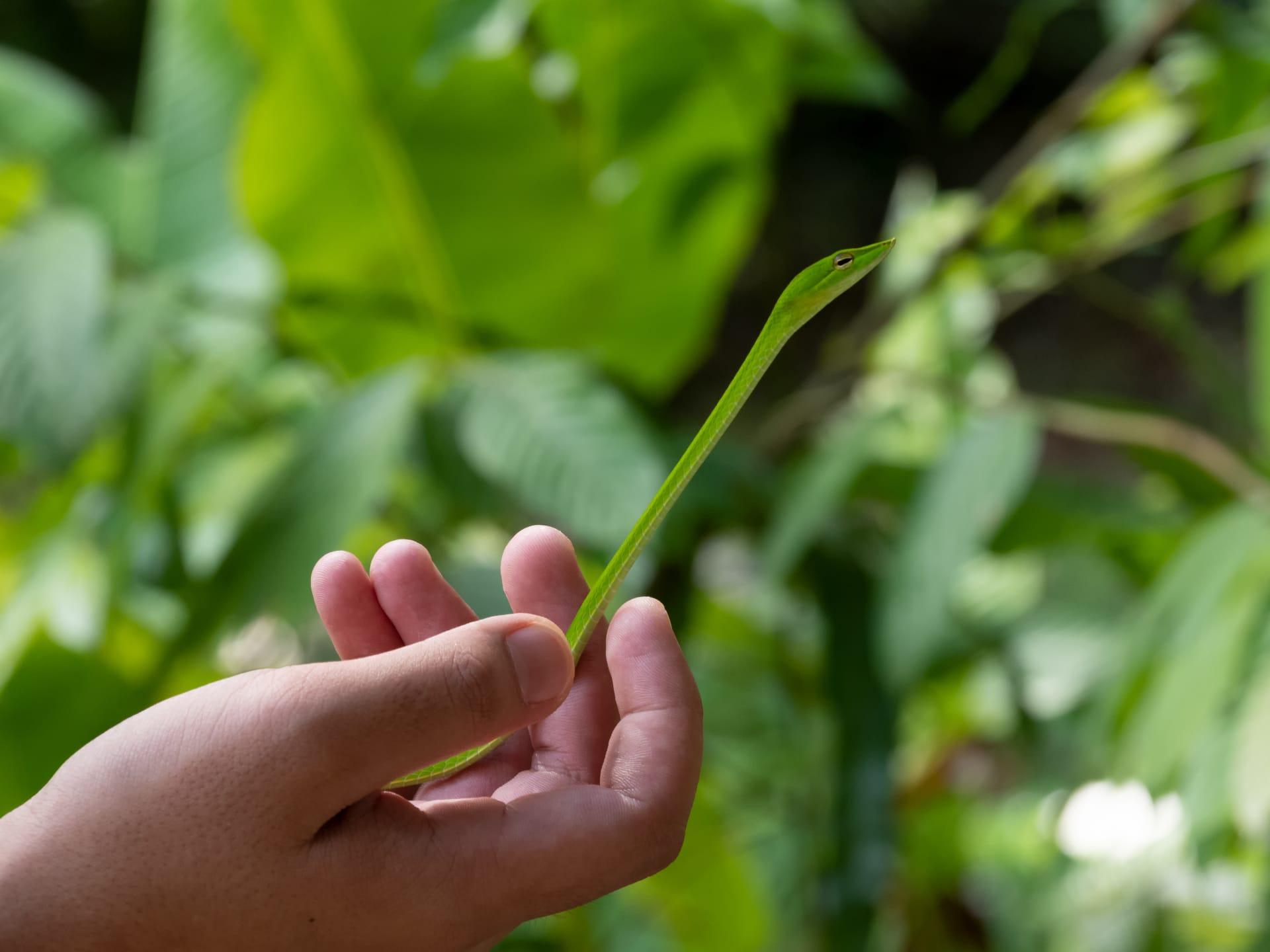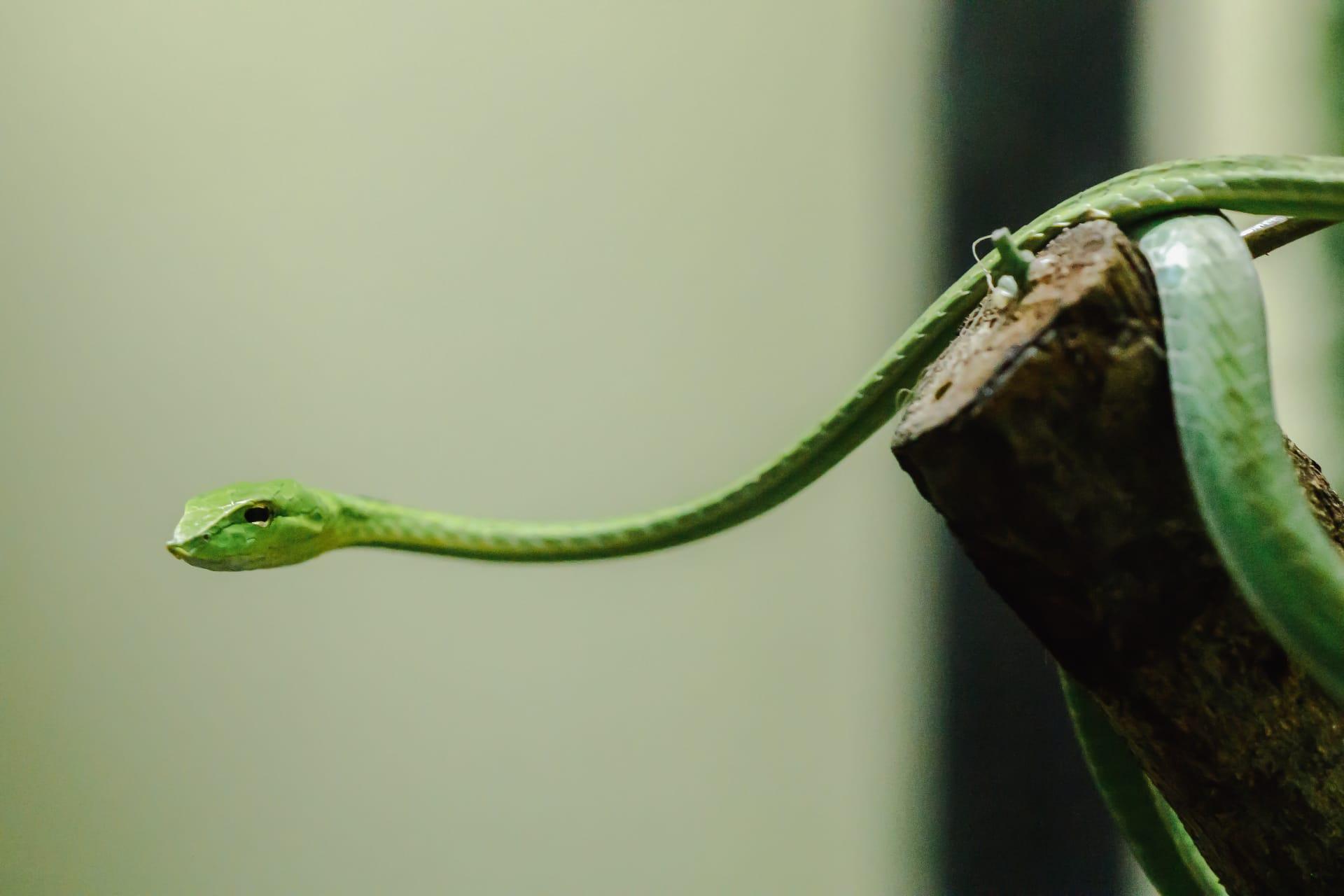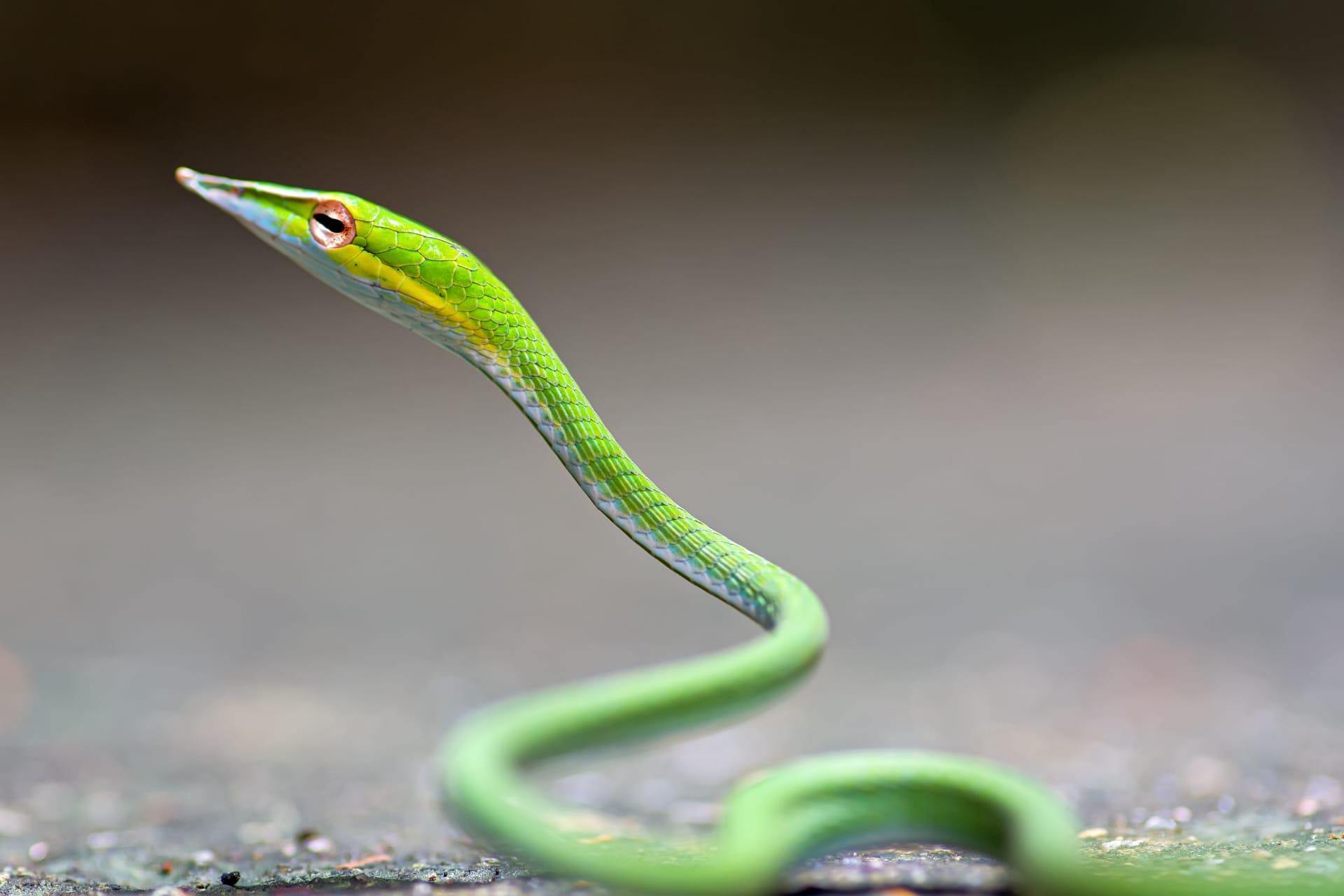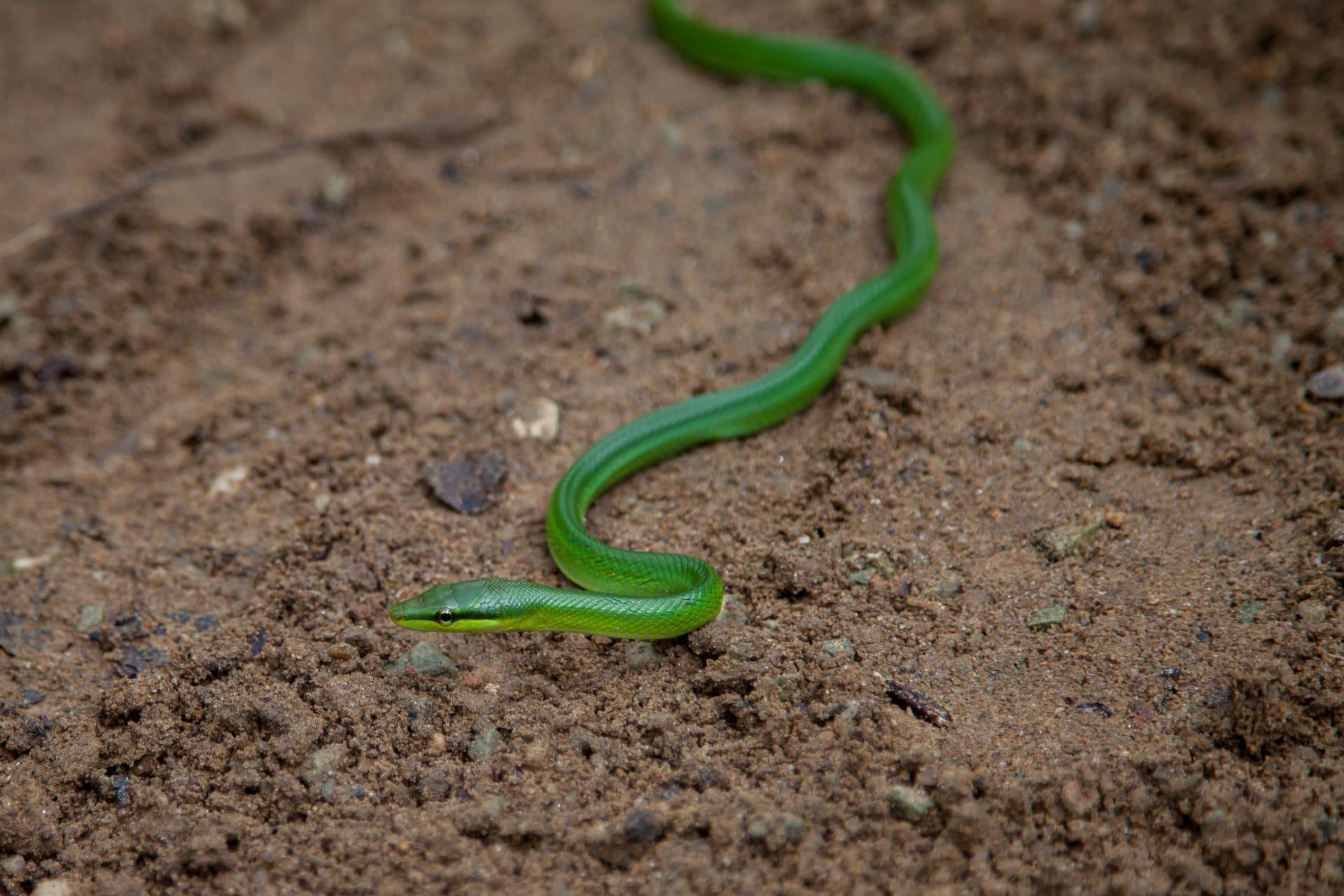1
The Oriental Whip Snake, a slender and elegant creature, exhibits a fascinating ability to change color. This isn't like the chameleon's dramatic shifts, but a subtle variation. During its juvenile stage, this snake often sports a bright green hue, making it almost invisible among leaves. As it matures, the color can deepen to a darker green or even turn to brown, aiding in camouflage among tree branches and trunks. This color adaptation is vital for both hunting and evading predators.
Another intriguing aspect is their eyes. The Oriental Whip Snake's eyes are unusually large compared to its head size, providing a wide field of vision. This feature is crucial for a tree-dwelling snake, as it enables them to spot prey and predators at a distance. These large eyes are not just for day vision; they enhance night vision too, making the snake an effective nocturnal hunter. The pupils, which are horizontal during the day, become round at night to maximize light intake.

2
The Oriental Whip Snake is known for its impressive speed and agility. It can move swiftly through trees, aided by its slender body that measures about 1 to 1.2 meters in length but only 2 to 3 centimeters in diameter. This snake navigates through the foliage with ease, darting from branch to branch and tree to tree, which is essential for capturing prey and avoiding threats.
When it comes to diet, this snake has a particular taste for lizards, especially geckos. Its hunting strategy is quite remarkable. The Oriental Whip Snake will remain motionless, blending into its surroundings, and then strike with lightning speed when a prey comes within range. The snake's slender body allows it to reach into crevices and holes in trees where lizards often hide, making it an adept hunter in arboreal environments.

3
The mating behavior of the Oriental Whip Snake is a rare spectacle. Unlike many snakes that mate on the ground, this species often performs its courtship rituals in the trees. During mating season, males engage in a unique display, where they intertwine with each other in a show of strength and agility, almost like a dance in the treetops. This display is not only a way to compete for females but also a mesmerizing sight.
Oriental Whip Snakes lay eggs, typically in batches of 5 to 10. What's interesting is their choice of nesting sites. They often lay eggs in hollows in trees or in leaf litter, places that offer protection from predators and a stable temperature. The incubation period lasts around two to three months, after which the young snakes emerge, already capable of climbing and fending for themselves.

4
One of the lesser-known facts about the Oriental Whip Snake is its role in ecosystem balance. As a predator of insects and small vertebrates, it helps control the population of these species, preventing overpopulation and the resultant damage to vegetation. This snake contributes significantly to maintaining the health of forest ecosystems.
Despite its slender appearance, the Oriental Whip Snake is surprisingly strong. Its muscular body allows it to constrict and subdue prey much larger than what one would expect for its size. This strength, combined with its agility, makes it a formidable hunter in its arboreal habitat.

5
The Oriental Whip Snake has a unique defense mechanism against predators. When threatened, it can inflate its neck, revealing a bright white or yellowish underside, which serves as a warning signal. This behavior, coupled with a hissing sound, is often enough to deter potential predators, making it an effective survival strategy.
Lastly, the Oriental Whip Snake is a solitary creature, often seen alone except during mating season. It has a territorial nature, with individuals occupying specific areas where they hunt and live. This solitary behavior is crucial for a species that relies heavily on stealth and surprise to catch its prey, as it minimizes competition and disturbance in its hunting grounds.